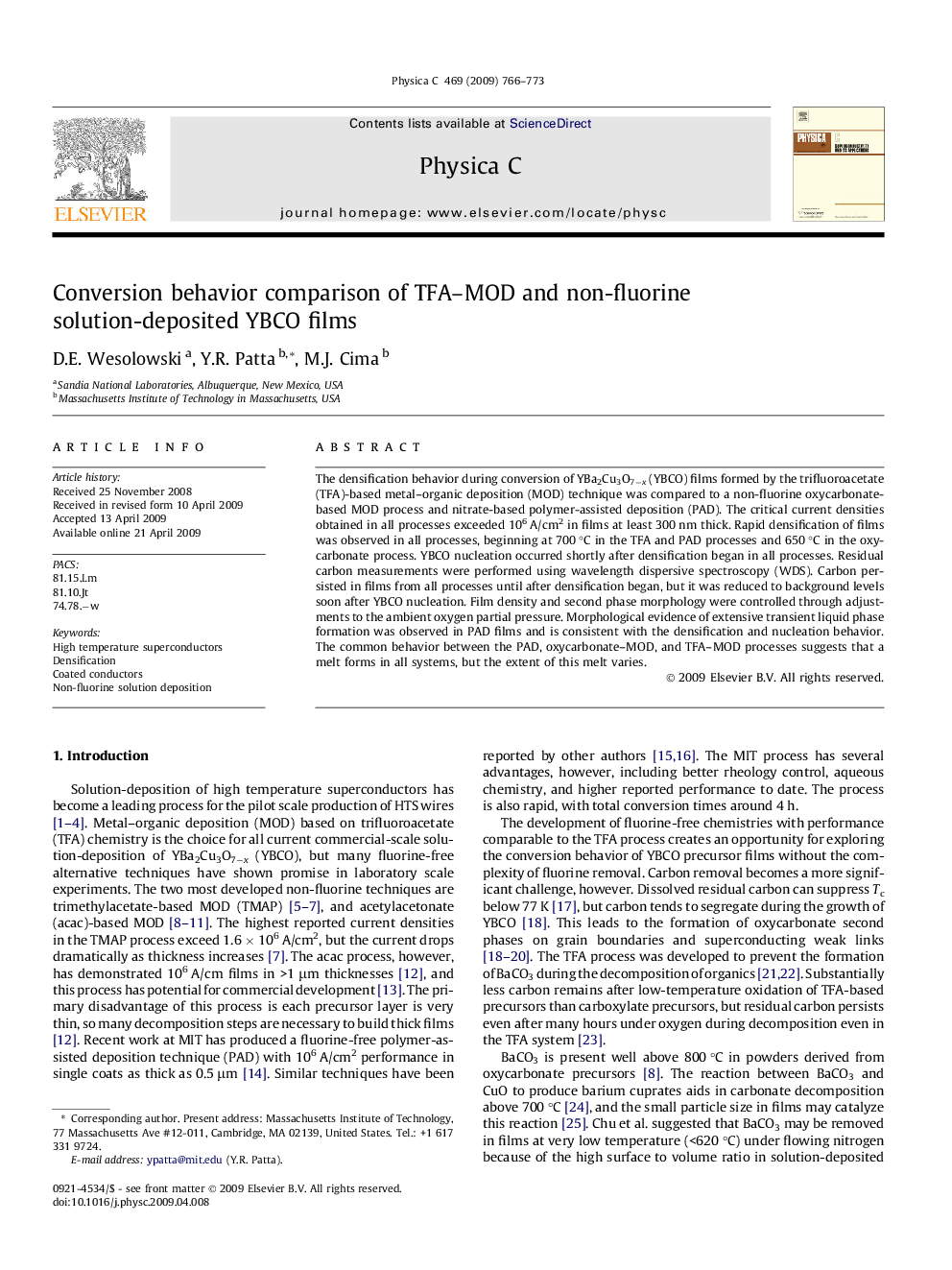| Article ID | Journal | Published Year | Pages | File Type |
|---|---|---|---|---|
| 1818659 | Physica C: Superconductivity and its Applications | 2009 | 8 Pages |
Abstract
The densification behavior during conversion of YBa2Cu3O7âx (YBCO) films formed by the trifluoroacetate (TFA)-based metal-organic deposition (MOD) technique was compared to a non-fluorine oxycarbonate-based MOD process and nitrate-based polymer-assisted deposition (PAD). The critical current densities obtained in all processes exceeded 106 A/cm2 in films at least 300 nm thick. Rapid densification of films was observed in all processes, beginning at 700 °C in the TFA and PAD processes and 650 °C in the oxycarbonate process. YBCO nucleation occurred shortly after densification began in all processes. Residual carbon measurements were performed using wavelength dispersive spectroscopy (WDS). Carbon persisted in films from all processes until after densification began, but it was reduced to background levels soon after YBCO nucleation. Film density and second phase morphology were controlled through adjustments to the ambient oxygen partial pressure. Morphological evidence of extensive transient liquid phase formation was observed in PAD films and is consistent with the densification and nucleation behavior. The common behavior between the PAD, oxycarbonate-MOD, and TFA-MOD processes suggests that a melt forms in all systems, but the extent of this melt varies.
Related Topics
Physical Sciences and Engineering
Physics and Astronomy
Condensed Matter Physics
Authors
D.E. Wesolowski, Y.R. Patta, M.J. Cima,
